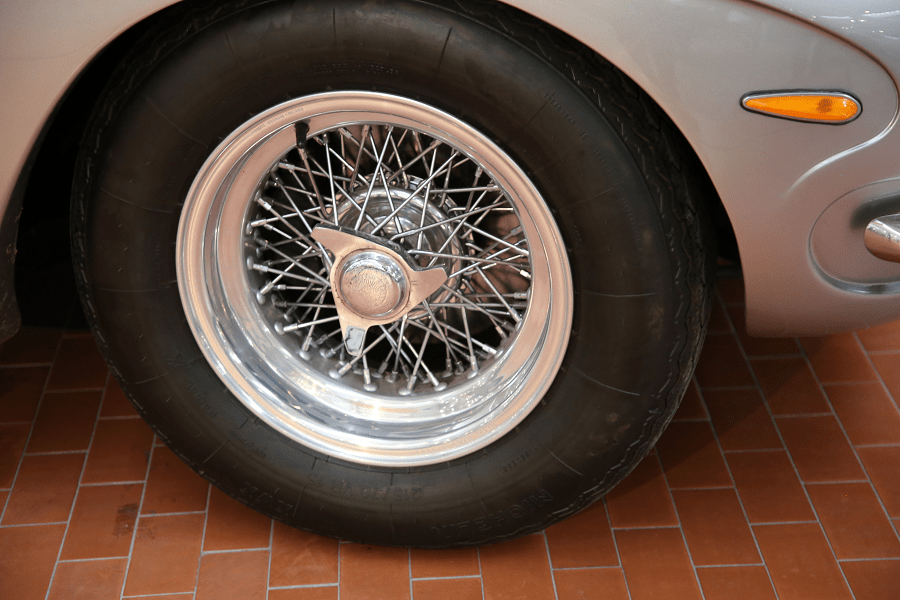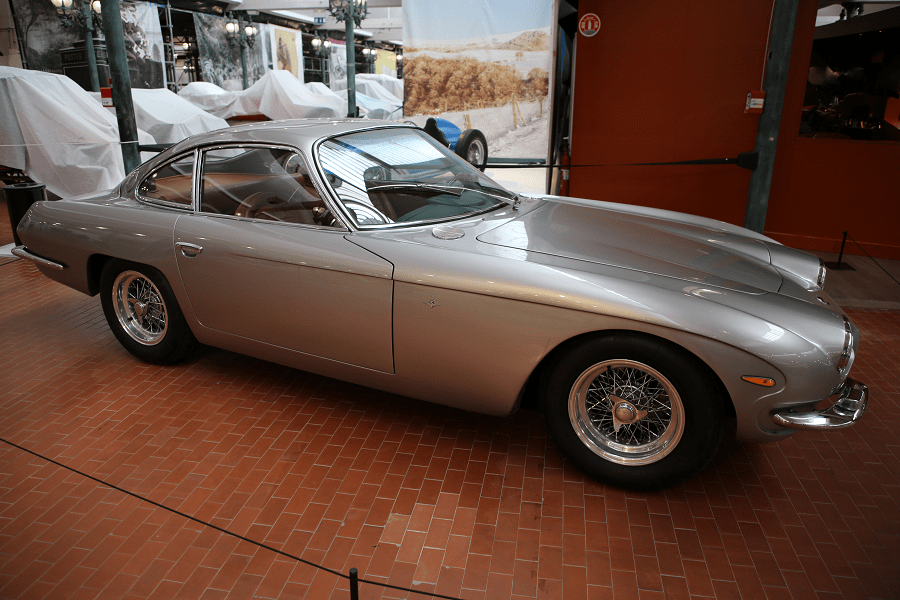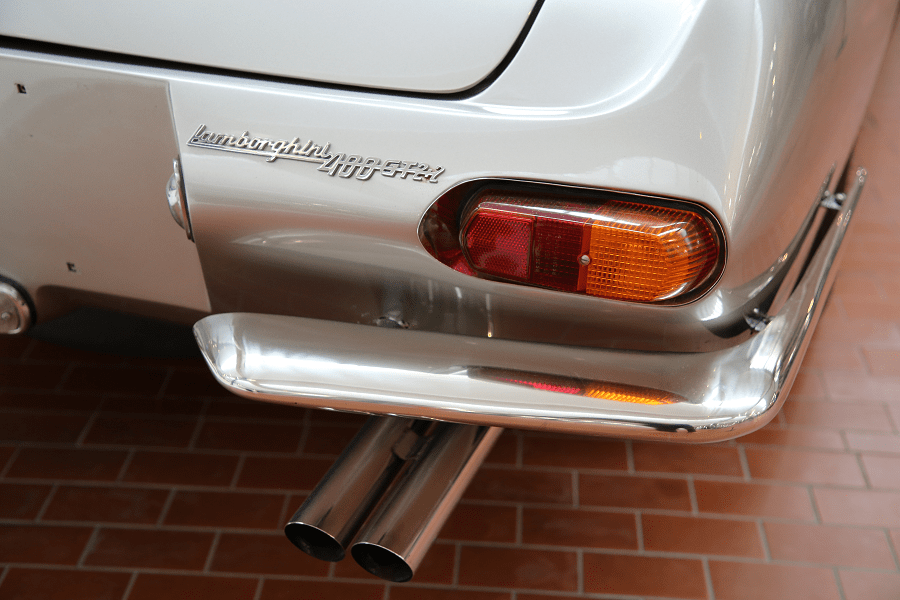Lamborghini 400 GT is the name given to two grand tourers produced by Italian manufacturer Lamborghini.
The first 400 GT, commonly referred to as simply the 400 GT or 400 GT Interim, was essentially the older 350 GT featuring an enlarged, 3,929 cc V12 engine, with a power output of 320 hp (235 kW). Twenty-three of these cars were built, with three featuring aluminium bodywork.
The second 400 GT, commonly known as the 400 GT 2+2, had a different roofline, and minor sheetmetal changes compared to the 350 GT and first 400 GT.
A total of 224 units of the 400 GT 2+2 were built from 1966 to 1968, when it was replaced with the Islero.
The second 400 GT, commonly known as the 400 GT 2+2, was first presented at the 1966 Geneva Auto Show. The steel-bodied 2+2 has a different roofline with larger side windows and a smaller rear windshield, and subtle but thorough sheetmetal changes compared to the 350 GT and first 400 GT. The floorpan is slightly lower while the beltline is actually 66 mm (2.6 in) taller.
The larger body shape enabled the +2 seating to be installed in the rear, where the 350 GT only had room for luggage or the rarely selected option of +1 seating.
The bodywork revisions were carried out by Carrozzeria Touring, who also built the first examples, but after Touring’s 1967 bankruptcy Marazzi took over production.
The 400 GT 2+2 also had a Lamborghini designed gearbox, with Porsche-style synchromesh on all gears, which greatly improved the drivetrain.
When leaving the factory the 400 GT was originally fitted with Pirelli Cinturato 205VR15 tyres (CN72).
A total of 23 units of the 400 GT Interim and 224 units of the 400 GT 2+2 were built from 1966 to 1968, when it was replaced with the Islero.
The 400 GT 2+2, 400 GT Interim and the 350 GT all shared the same 2,550 mm (100.4 in) wheelbase.


















